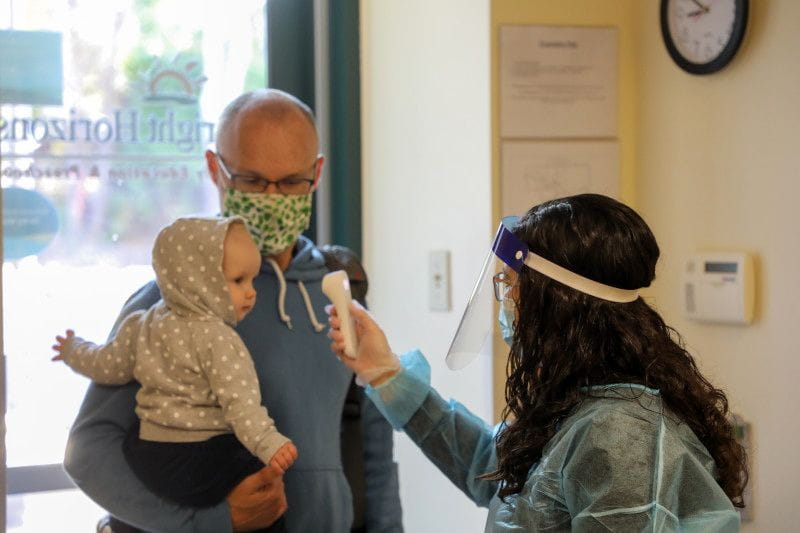Joy Matthews, vice president of total rewards at insurance company QBE, was faced with that very question. Joy saw an opportunity to solidify her company's position as an employer that really cares about its people. She talked to us about QBE's benefits evolution, and how she took a hands-on approach to develop a wide-range of solutions for the employees of QBE.
Some of the lessons that can be drawn from Joy's experiences:
Be Bold
Working previously at a company where there were a lot of family-focused benefits, Joy says she arrived at QBE well aware of the power of a great platform. "I personally used many of those benefits at my earlier company," she said. "So I understood the value these services can bring to an employee's life." She also researched what was new in the field through colleagues at other companies and talked often with existing vendors about what products were coming down the pipeline. When asked how QBE could expand upon the successful back-up care and parental leave programs they already offered, she was ready with a presentation of benefits that spanned services to help employees find elder care to milk shipping for nursing mothers. "You know you might not get everything," she says. "But you always have to understand what is available and advocate for your employees."
Listen To Your Employees
Affinity groups are a great source to gather feedback on the evolving needs of employees. But sometimes, the best insights comes from informal conversations around the office. Joy recalls the origins of the QBE milk-shipping program - a casual chat she had with a new mom who who'd just returned from maternity leave. The woman talked about the challenges of nursing while on business travel, and the fact that an upcoming trip meant she'd have to throw away any milk she'd pump while she was gone. Joy brought that conversation to her company's leaders which led to discussion and an eventual decision to implement a mother's milk shipping program. Through face-to-face conversations, we've ended up with fantastic programs that come from very personal needs."
Don't Be Afraid to Use Your Own Perspective
Sometimes the best solutions come from people who know a challenge personally - because they can put their finger on exactly what could help. Joy herself has two adopted sons, one who has special needs. She knew personally how time consuming and distracting it was to find services, and how useful it would be to have assistance. "I could draw on the experiences I had with my 6-year-old. The challenges of having to find a therapist and then coordinate care, waking up in the middle of the night wondering what I was going to do next," she said. And she knew from talking to employee groups that she wasn't the only one. "I knew personally how the Bright Horizons Special Needs program could help parents," she said. The key is to pay attention to your own experiences and intuitions.
Leverage Existing Resources
If you're looking for new programs, look to current vendors first. Why? Part of it is trust. After the great success with back-up care, Joy was confident she'd get approval for other Bright Horizons programs. Launching a new program with a known resource also provides the advantage of speed and efficiency. New vendor contracts can take time to assess and develop an appropriate foundation for success. "Since we already had Bright Horizons..., we were able to add College Coach and Bright Horizons Special Needs very quickly," said Joy.
Communicate
Creating programs is just one aspect of the job. Benefits success means you also have to get people to use them. And that requires communication. Bombarding people with information at onboarding proved ineffective, because the one-size-fits-all approach means all new hires sit through content that may not pertain to them currently or in the future. So in addition to providing program details in the employee handbook and online, QBE created triggers for additional information to be sent out at key moments of employment. When employees apply for parental leave, for example, they automatically get information about back-up care and college coaching. "We're trying to think of those times in employees' lives when they need information, and then to think about how to reinforce that information at the appropriate moments."
Make it Hard (or Even Impossible) to Say No
Pitching benefits to leadership can be an uphill climb. But the best way to meet success is to package your program up so neatly that it's hard for leadership to resist. How? When introducing the concept of milk shipping, Joy traveled a completely unconventional path. "I wondered, what if instead of being employer sponsored, it was reimbursed as a business expense?" she says. That question took her to the QBE tax department which then took her to finance. All that was left was to make it happen. And they did.
A How-To for Benefits Success
Joy's benefits success story not only offers a case study in building a program, but also an instruction manual for how one HR person can make a real difference. "My goal was to make a stronger story for the QBE employee experience," she says.A strong employee benefits program is not just about individual users, but impacts the whole culture of the company. "Whether they need a pet sitter or someone to clean their house or help with a college application...everyone's looking for solutions. And I'm so thrilled that we can offer them. It's good for recruitment. It's good for productivity. And I know these programs will definitely make life better for our employees."





